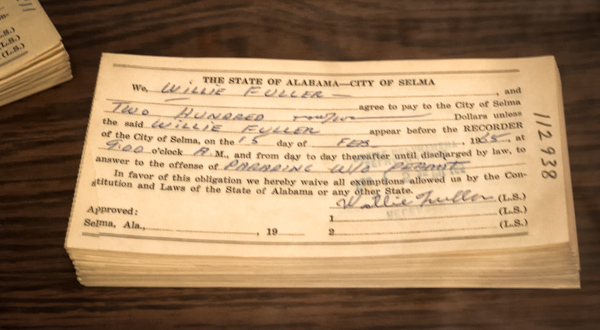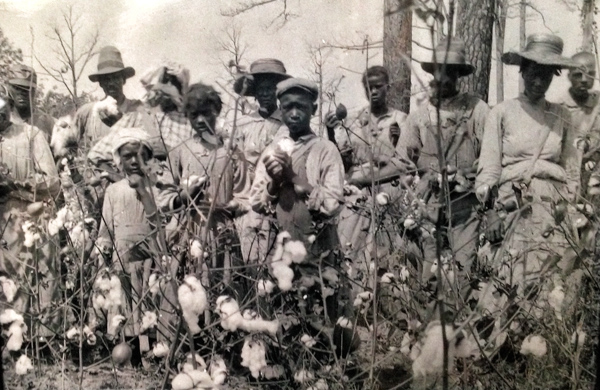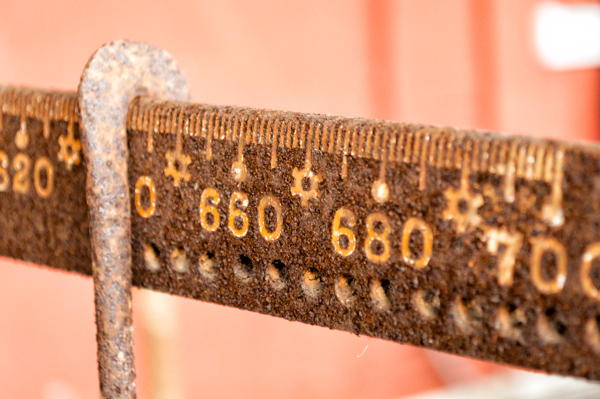Heads up - This is a longer than average posting.
It is a few days after visiting Selma, Alabama and I am sitting in a hotel room in Junction, Texas, 120 miles from the Mexican border. It is supposed to go down to 14 degrees tonight, yet climate change is still considered unreal by many of the good folks of Texas. My goal for the evening is to write about our visit to Selma - the site of Bloody Sunday in March 1965. While I am busy looking for video images to go with my posting, David turns on the TV. On my laptop screen I see tear gas and billy clubs for Freedom Marchers and on TV Barack Obama is giving his fifth State of the Union Address. A half a century - lots of progress and not nearly enough. It gives me the chills.
We drove into Selma from Montgomery, following the trail of the famous Selma Freedom March. Along the way there were markers of the campsites. Just before crossing the famous Edmund Pettus Bridge the road is flanked by the National Voting Rights Museum and the Civil Rights Memorial Park.
Reverend Hosea Williams: Unbossed and Unbought
John Lewis: When We Pray, We Move Our Feet
Amelia Boynton Robinson & Marie Foster: Don't Let Nothing Turn Them Around
There is a peaceful, almost Asian, feel to the wooden entrance to the paths along the river.
Civil Rights Memorial Park - Footpath Entrance
Down along the footpaths there are several simple wooden memorial plaques to a few of the many who lost their lives in this struggle, both in Selma and throughout the South. Some names were familiar to me, others were not.
Jonathan Daniels was murdered in Fort Deposit, Alabama on August 14, 1965. The valedictorian of the 1961 class of Virginia Military Institute, Jonathan Daniels was pursuing postgraduate studies when he decided the ministry was the path he wanted to follow. As a seminarian in training he answered Martin Luther King’s call to the ministry to support racial equality and headed south. He became involved in numerous civil rights actions. From the Virginia Military Institute archives: “In August 1965 Daniels and 22 others were arrested for participating in a voter rights demonstration in Fort Deposit, Alabama, and transferred to the county jail in nearby Hayneville. Shortly after being released on August 20, Richard Morrisroe, a Catholic priest, and Daniels accompanied two black teenagers, Joyce Bailey and Ruby Sales, to a Hayneville store to buy a soda. They were met on the steps by Tom Coleman, a construction worker and part-time deputy sheriff, who was carrying a shotgun. Coleman aimed his gun at sixteen-year-old Ruby Sales; Daniels pushed her to the ground in order to protect her, saving her life. The shotgun blast killed Daniels instantly; Morrisroe was seriously wounded.” Daniels death shocked the Episcopal Church into confronting the reality of racial inequality. Coleman was acquitted by an all white jury.
James Earl Chaney, was murdered in Philadelphia, Mississippi, along with Michael Goodman and Andrew Schwerner, on June 21, 1964. They were killed by members of the Ku Klux Klan and buried in a nearby levee. It took multiple prosecution efforts over 30 years to bring only a semblance of justice for these murders. None of those convicted in the 1967 trial served more than six years. The presiding federal judge was infamously quoted as saying, "They killed one nigger, one Jew, and a white man. I gave them all what I thought they deserved.”
If you want a refresher on Bloody Sunday, the march whose coverage interrupted national television viewing of the movie Trials at Nuremberg and pushed Lyndon Johnson into sending federal troops to protect marchers and ultimately the passage of the Voting Rights Act, here it is:
When we planned our route for this trip and I saw that we would be passing through Selma, I knew I wanted to see this place that was so important in Civil Rights history, especially after I read that the guides in the National Voting Rights Museum were people who had participated in the famous Freedom March. So I was very disappointed when we walked across the street from the Civil Rights Memorial Park to the National Voting Rights Museum and discovered that it was closed, although the website led us to expect otherwise.
At the Selma Visitor’s Center we learned that the Voting Rights Museum and the Slavery Museum no longer have the funds to stay open 5 days a week. The helpful woman at the Visitor Center suggested that we visit the Old Depot Museum because it is home to a diverse collection of artifacts from all of the peoples who have lived in the Black Belt of Alabama. It includes some significant Civil Rights artifacts she assured us.
So off we went and, instead of a Freedom Marcher being our guide to Selma’s Civil Rights history, we had Beth Spivey, the sole employee of the Old Depot Museum. Spivey is a self-described “redneck” and is too young to have witnessed Bloody Sunday. Yet she is passionate about her work and, when it comes to preserving the history of Selma and communicating it to the many children and groups that come through the Museum, she is nothing less than a force of nature.
Spivey collected our money and launched into the Depot's story. Originally it was a munitions factory that supplied arms to the Confederate Army, but the Union Army put an end to that in 1865. The Depot was rebuilt in 1891 and has served many functions over the years – from train depot to municipal offices. Our tour started with a look at how the building was when Spivey walked in the door. It had been broken into office spaces with dropped ceilings and dingy display cases - not very appealing. But down at the end of the building the remnants of office space are gone. With the help of a few volunteers and a miniscule budget, the brick walls and wooden ceiling beams were cleaned and exposed to create a space that feels like a museum, not a dusty collection of “stuff.” Large murals by Felix Gaines provide a powerful backdrop to the Civil Rights artifacts in this room.
Why was this the first renovation project she took on? Why the Civil Rights collection and not the military, Native American or other collections? In her first couple of days on the job Spivey learned that she had to give talks to visiting school groups about Selma’s Civil Rights history. In a county that is 70% Black she had to come up to speed quickly and get it right. Although she didn’t state it directly I am guessing that the materials and history she found in the Old Depot affected her deeply and informed her action plan.
It is with great passion that she talks about slavery using a real receipt for a teenage slave. When Spivey learned that one of the teachers in a school group had been on the Pettus Bridge on Bloody Sunday, she asked all the students to turn around and thank this teacher. “You need to thank those who have come before you for all that they have done. You need to show respect to your elders. Everyone has a story that you don’t know.”
Beth Spivey is a woman with energy, passion and big hopes for the Old Depot Museum. We wish her well.








